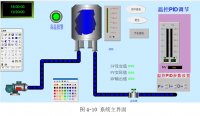基于PLC的锅炉温度控制系统设计(附PLC程序,组态,接线图,西门子S7-200)(任务书,开题报告,外文翻译,论文说明书12000字,CAD图2张,PLC程序,组态)
摘 要
自二十世纪七十年代起,可编程序逻辑控制器在世界各国发展迅猛。在这段时期,PLC在处理模拟量、数字运算、人机接口和网络的能力上也同时得到大幅提高,PLC在工控领域得到广泛应用。PLC具有优良的可靠性、抗干扰性、灵活性以及易于编程和调试等优点,特别是在工业生产中的顺序控制范围内,PLC具有独到的优势。
本设计中控制系统的被控对象是电加热锅炉,系统的主、副被控参数分别为电加热炉的出口水温度和炉膛温度,系统可控制的参数为电加热炉的电阻丝,系统所使用的控制器为PLC,整个控制系统属于串级控制系统,系统中所运用的算法为PID算法,PLC编程语言使用的是通俗易懂的梯形图语言,通过相关程序的编写,从而可以实现对该电加热炉温度自动控制的目的。
本文分别对电加热炉温度控制系统的方案介绍,工作原理,温度传感器的选型、PLC硬件连接、程序设计、组态软件等各个方面进行描述。整个控制系统具有优良的稳定性、较高的可靠性、短暂的响应时间以及优异的控制精度等特点,这些特点在工业控制具有十分重要的意义。
关键词:锅炉温度控制系统 串级控制 组态王 PID PLC
Design of boiler temperature control system based on PLC
Abstract
Since 1970s, programmable logic controller has developed rapidly in the world. During this period, PLC has been greatly improved in the processing of analog, digital computing, human computer interface and network capacity, and PLC has been widely used in industrial control field. PLC has excellent reliability, anti-interference, flexibility and easy programming and debugging advantages, especially in the industrial production of the order of control within the scope of PLC has a unique advantage.
The design of the control system is the object of electric heating boiler, system of main and auxiliary controlled parameter for electrical heating furnace outlet water temperature and the temperature of furnace respectively, the system can control the parameters of the resistance wire of the electric heating furnace, used by the system controller PLC, the whole control system belongs to the cascade control system, the system used in the algorithm for PID algorithm, using the PLC programming language is easy to understand the ladder diagram language, through the relevant procedures for the compilation, which can achieve the aim of automatic control of the temperature of the heating furnace of the electric.
In this paper, the temperature control system of electric heating furnace is introduced, working principle, temperature sensor selection, PLC hardware connection, program design, configuration software, and other aspects of the description. The whole control system has good stability, high reliability, short response time and excellent control precision and so on. These characteristics are of great significance in industrial control.
Keywords:Boiler temperature control system ;Cascade control; King view; PID; PLC
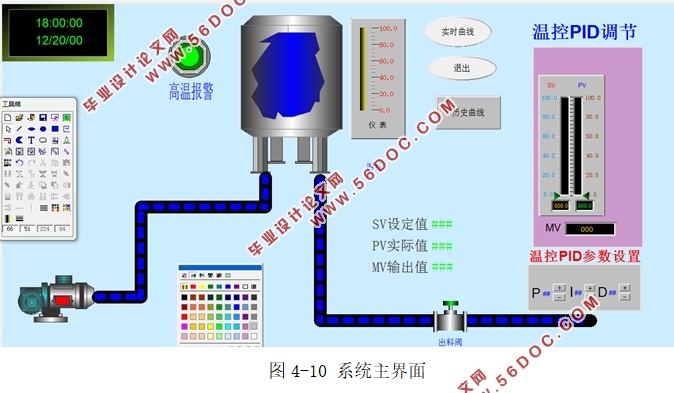
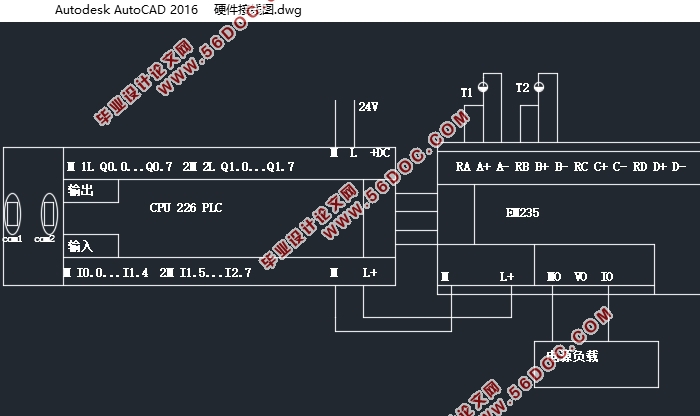
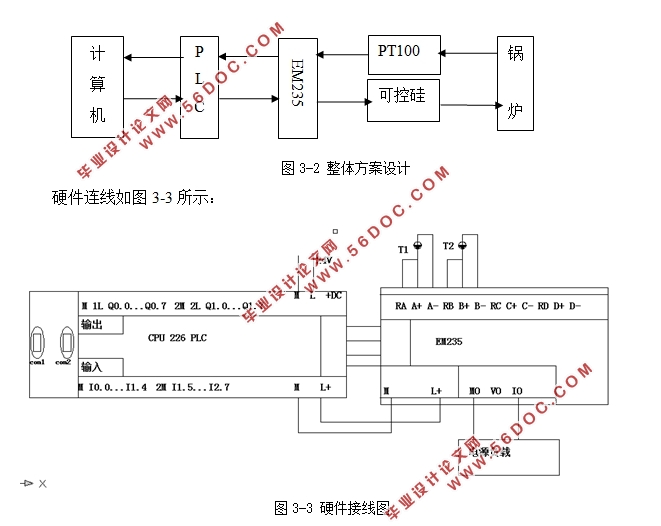
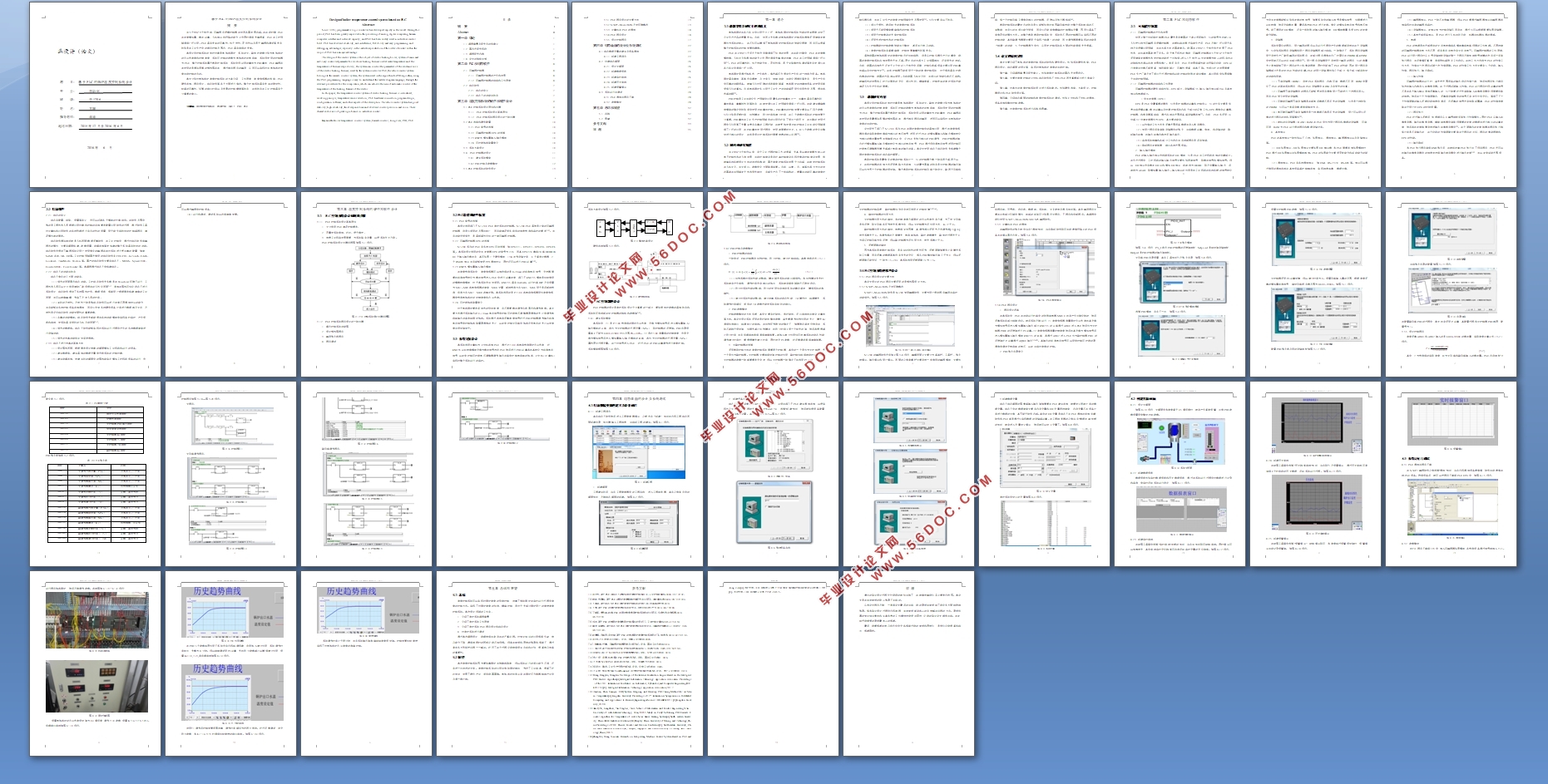

目 录
摘 要 I
Abstract II
第一章 绪论 1
1.1课题背景及研究目的和意义 1
1.2 国内外研究现状 1
1.3 课题研究内容 2
1.4 论文的结构安排 3
第二章 PLC和组态软件 4
2.1 可编程控制器 4
2.1.1 可编程控制器的产生和发展 4
2.1.2 可编程控制器的组成和工作原理 4
2.2 组态软件 7
2.2.1 组态的含义 7
2.2.2 组态王的功能与特点 7
第三章 温度控制系统的硬件和软件设计 9
3.1 PLC控制系统设计原则和步骤 9
3.1.1 PLC控制系统设计基本原则 9
3.1.2 PLC控制系统程序设计的一般步骤 9
3.2 PLC选型和硬件配置 10
3.2.1 PLC型号的选择 10
3.2.2 可编程控制器CPU的选择 10
3.2.3 EM235模拟量输入/输出模块 10
3.2.4 可控硅加热装置简介 10
3.3 系统方案设计 10
3.4 PLC控制器的设计 11
3.4.1 建立系统模型 11
3.4.2 PID控制及参数整定 12
3.5 PLC控制系统的软件设计 13
3.5.1 PLC程序设计的主要方法 13
3.5.2 STEP7--Micro/WIN开发环境概述 13
3.5.3 计算机与PLC的通信 14
3.5.4 PLC程序设计 14
3.5.5 设计控制程序 17
第四章 组态画面的设计及系统调试 22
4.1组态数据变量的建立及设备通信 22
4.1.1 新建工程项目 22
4.2 创建组态画面 26
4.2.1 设计主画面 26
4.2.2 新建数据报表 26
4.2.3 新建实时曲线 26
4.2.4 新建历史曲线 27
4.2.5 新建报警窗口 27
4.3 系统运行与调试 28
4.3.1 PLC通信与程序下载 28
4.3.2 参数整定 28
第五章 总结和展望 32
5.1 总结 32
5.2 展望 32
参考文献 33
致 谢 35
|
